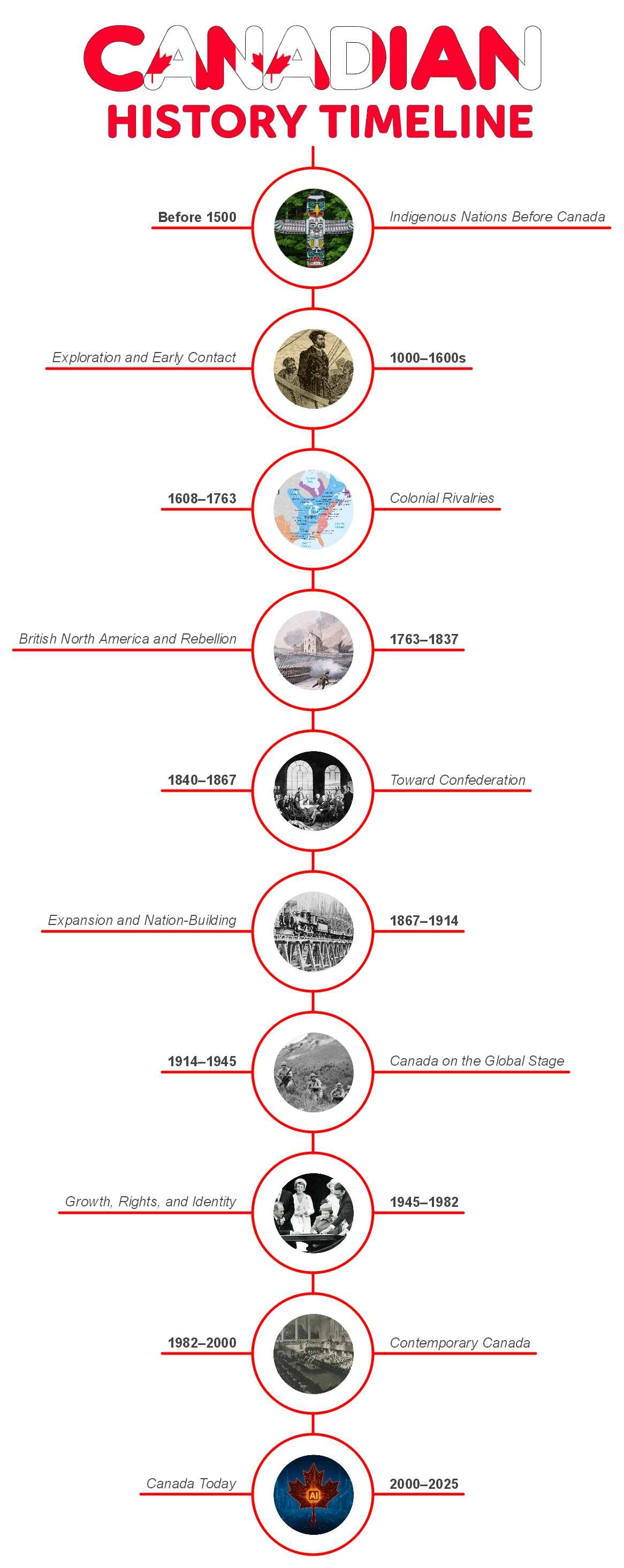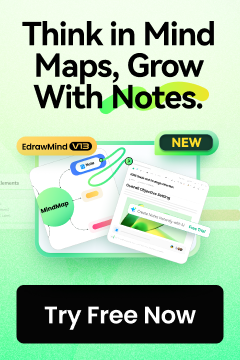Let’s take a walk through time. Canada wasn’t always Canada. Before borders and provinces, it was home to countless stories. Stories of land, of people, of resilience.
From ancient Indigenous nations to European settlers, every chapter added something new. Some moments brought progress. Others brought pain. But together, they shaped a country unlike any other.
In this article
Part 1: Canadian History Timeline
This isn’t just a timeline - it’s a journey. Through wars, dreams, rebellions, and reforms. Through forests, rivers, and frozen North. You’ll see how Canada was built, torn apart, and rebuilt again. Let’s begin where it all started.
Before 1500 AD: Indigenous Nations in Pre-Canadian Times
Before ships crossed the ocean, this land thrived with life. First Nations, Inuit, and Métis peoples lived here for thousands of years.
They built communities, traded across the continent, and passed down knowledge through stories. Their systems of government, land use, and law were sophisticated. Nations like the Haudenosaunee, Cree, and Anishinaabe flourished.
They lived with the land, not just on it. Hunting, farming, and fishing—all done sustainably. This wasn't wilderness. It was home. And it still is. Indigenous cultures continue to shape Canada, not as history, but as living, powerful voices today.
1000-1600s: Exploration and Early European Contact
The first Europeans didn't stay long. Around 1000 AD, Norse explorers like Leif Erikson reached Newfoundland. They built a small settlement, then left.
Centuries later, explorers like John Cabot and Jacques Cartier arrived. They weren't looking to settle; they were looking for trade, power, and resources. What they found were Indigenous nations already living here.
Soon came fur trading, fishing fleets, and the unintentional spread of disease. Indigenous populations suffered, but some built trading alliances. These early encounters were just the beginning. They laid the foundation for a long and complicated relationship. One between newcomers and the land's original caretakers.
1608-1763: Colonial Rivalries - New France & British Rule
France wanted in. In 1608, Samuel de Champlain founded Quebec City. It was the start of New France - a colony built on furs, alliances, and ambition.
The French worked with Indigenous allies like the Huron. But conflict was everywhere. Britain wanted Canada, too. The French-Iroquois wars, and later the global Seven Years' War, turned the land into a battlefield.
In 1763, France lost. Britain took control. The Treaty of Paris ended French rule. Indigenous nations lost powerful allies. New France became British Canada, but the fight for identity and survival was far from over.
1763-1837: British North America & Path to Rebellion
Britain's new territory came with challenges. French Canadians were Catholic, spoke French, and had their laws. The Quebec Act protected them - for now.
Meanwhile, waves of Loyalists fled the American Revolution and moved North. New English-speaking settlements grew fast. The country was divided into Upper and Lower Canada. Two cultures. Two systems. Lots of tension.
People wanted change. Power rested with British-appointed elites, not the people. In 1837, both Canadas saw rebellions. They failed—but they sparked a new idea: maybe Canada needed a government that listened to Canadians.
1840-1867: Toward Confederation
Canada didn't just pop into existence. It was built step by step. In 1841, Upper and Lower Canada were merged. Not everyone liked it. But it forced cooperation.
Industrial growth, railways, and trade brought the colonies closer. Still, the real push came from fear, especially fear of the U.S. after its Civil War. Leaders like John A. Macdonald and George Brown pushed for unity.
In 1867, it happened. The Dominion of Canada was born, uniting Ontario, Quebec, Nova Scotia, and New Brunswick. It was a new country - still tied to Britain, but ready to find its own voice.
1867-1914: Expansion & Nation-Building
After 1867, Canada didn't stop growing. It spread westward fast. Manitoba joined in 1870, but not without resistance. The Métis, led by Louis Riel, fought to protect their land and rights.
British Columbia agreed to join in 1871, but only if a railway connected it to the East. The Canadian Pacific Railway was finished in 1885. It was a huge moment. It linked the country, but also came at great cost to Indigenous lands and workers.
Immigration surged. Wheat farms filled the Prairies. Canada was expanding quickly. But underneath it all, tensions over identity, land, and justice remained.
1914-1945: Canada on the Global Stage
World War I changed everything. Over 600,000 Canadians served. More than 60,000 died. The Battle of Vimy Ridge in 1917 became a proud, defining moment.
After the war, Canada got its seat at the League of Nations. Slowly, it was acting like its own country. Then came the Great Depression. Jobs vanished. People suffered. It sparked protests and new political ideas, like the rise of the CCF (now the NDP).
In World War II, Canada stepped up again. From the beaches of Normandy to the skies of Europe, Canadians fought bravely. By 1945, Canada was no longer just a colony; it was a respected global player.
1945-1982: Modern Canada: Growth, Rights & Identity
Post-war Canada boomed. Cities grew. So did immigration. People came from around the world, reshaping the country's identity.
In 1949, Newfoundland joined Confederation. By 1960, Indigenous peoples could vote federally. In Quebec, the Quiet Revolution challenged old power structures and boosted pride in French identity.
The 1970s brought both fear and reform. The FLQ crisis led to martial law. But Canada also embraced diversity. In 1971, multiculturalism became an official policy. By 1982, Canada had its own Constitution and the Charter of Rights and Freedoms. For the first time, it fully controlled its laws.
1982-2000: Contemporary Canada
The 1980s and '90s were full of tension and transformation. Quebec held two referendums on independence in 1980 and again in 1995. Both failed, but the second came incredibly close.
Indigenous resistance also grew. In 1990, the Oka Crisis put land rights in the spotlight. Canada was being forced to confront its colonial legacy. In 1999, Nunavut was created - a major step in Indigenous self-government.
Economically, Canada opened up. Free trade deals like NAFTA connected it more to the U.S. and Mexico. Culturally, it embraced diversity more fully than ever before. A new Canada was emerging; more complex, more confident.
2000-2025: Canada Today
Canada in the 21st century is still a work in progress. It's proud, peaceful, and diverse, but not without challenges.
Truth and Reconciliation with Indigenous peoples is now a national priority. The discovery of unmarked graves near former residential schools shocked the country. It reminded many of Canada's painful colonial past. And the urgent need for healing and justice. Climate change, housing, and health care are big concerns. So is unity with Western alienation and Quebec's ongoing push for more autonomy.
But Canada has also led in peacekeeping, refugee resettlement, and climate efforts. It celebrates inclusion while wrestling with its past. The story isn't over - it's still being written every day.
Part 2: How to Make the Canadian History Timeline in EdrawMind?
Canada has a long history, dating back to before 1500 AD. Making textual notes of this much information can be quite confusing. Luckily, you can now turn your plain data into visually engaging timelines with EdrawMind.
This diagramming tool has dozens of options to customize your timelines to make them more appealing. The best part? As a beginner, you can use built-in templates to avoid starting from scratch.
Let's look at how to create the Canadian history timeline in EdrawMind:
Step 1: Open a New File
- Download and launch EdrawMind on your device.
- Or, try EdrawMind online.
- Now, you can log in using your social accounts or create a free Wondershare account.
- Click the New Mindmap button on the homescreen to get started.
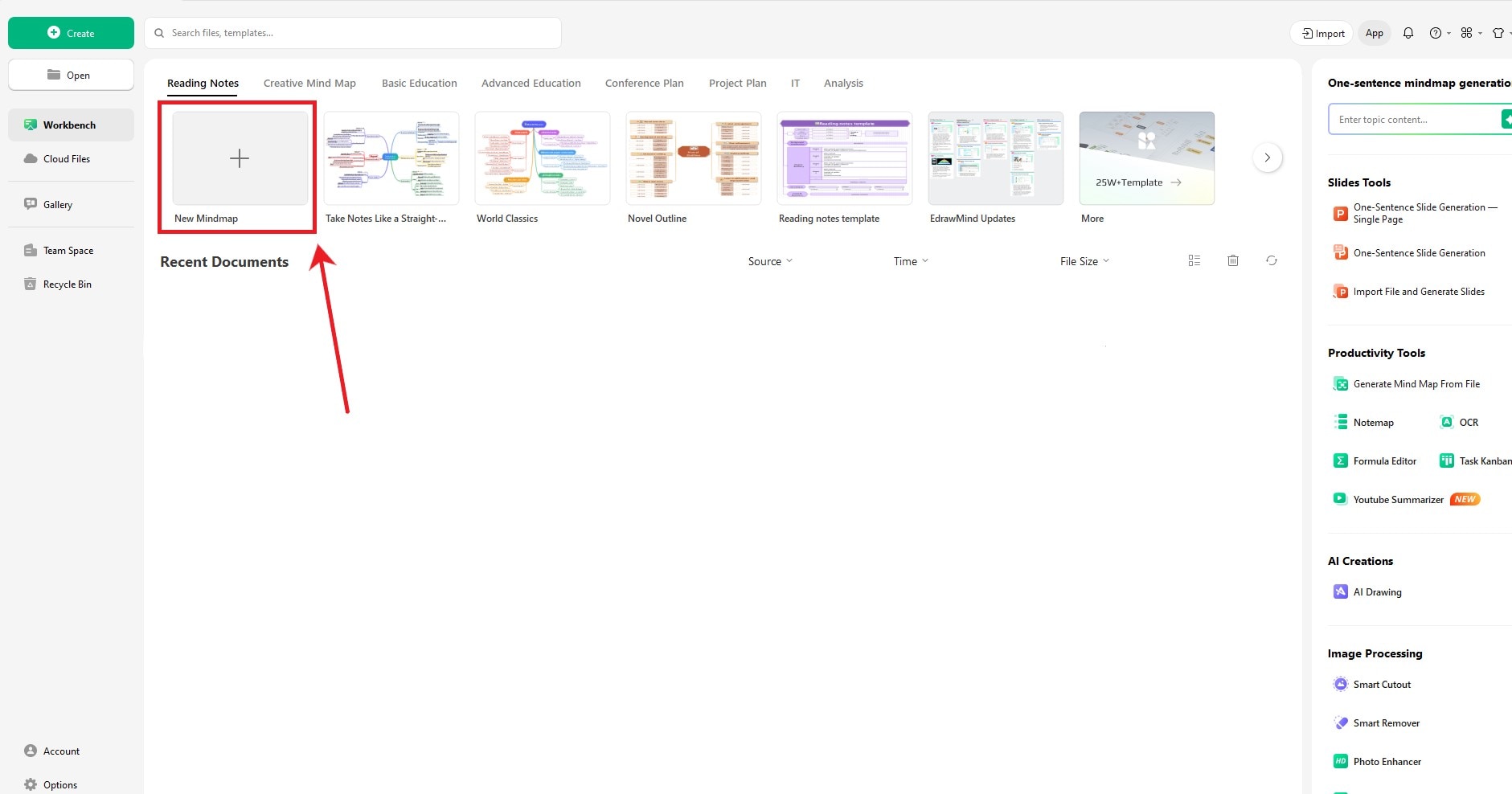
Step 2: Set the Right Layout
- First things first. Click the Main Idea to select your current layout.
- Click Layout from the floating menu to see all the available options.
- Select the Timeline (down) from the list.
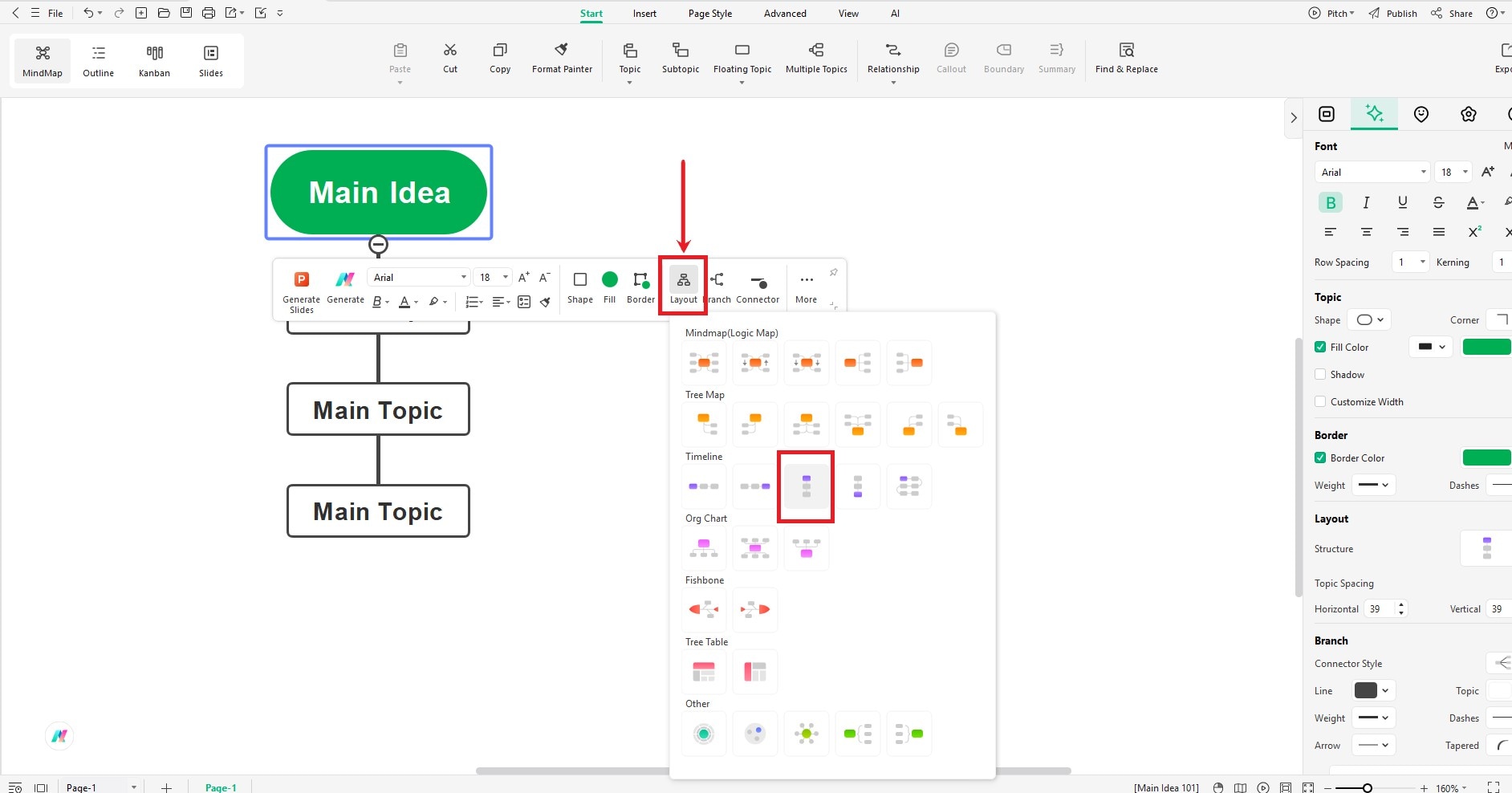
Step 3: Insert New Entries
- Let's expand the timeline now. Click the Main Idea and select Topic from the top menu bar. A new entry will be added at the end.
- Follow this step to add as many new topics as you need.
- Similarly, select any Main Topic and click Subtopic from the top menu bar to add a new subtopic.
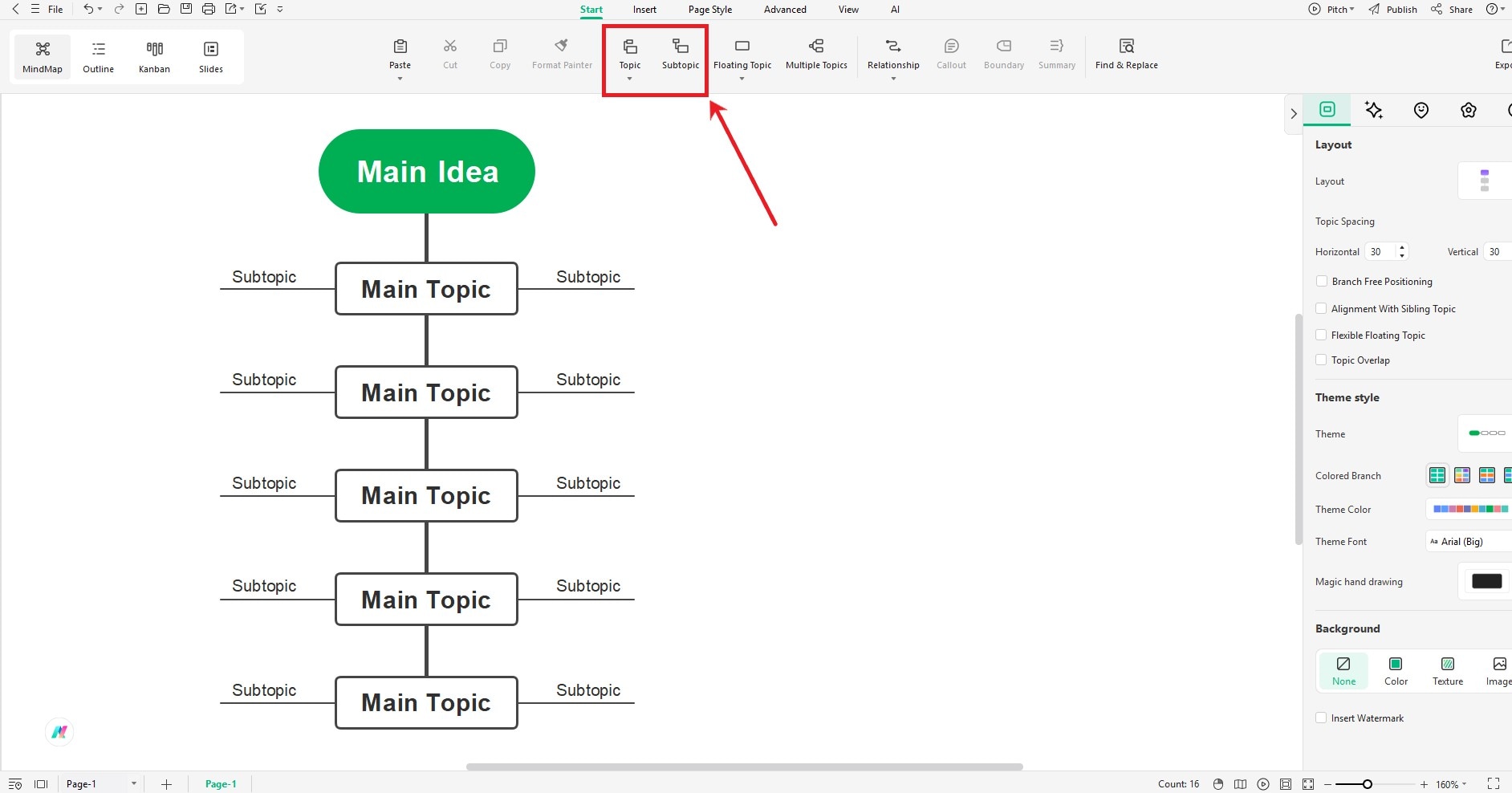
Step 4: Customize the Timeline
- Now's the fun part. Select one or multiple topics at once and customize their settings from the floating menu. For detailed customization, go to the right toolbar.
- Double-click any topic to select its placeholder text. Remove it and start typing to enter new content.
- Now, customize font settings like in the previous step.
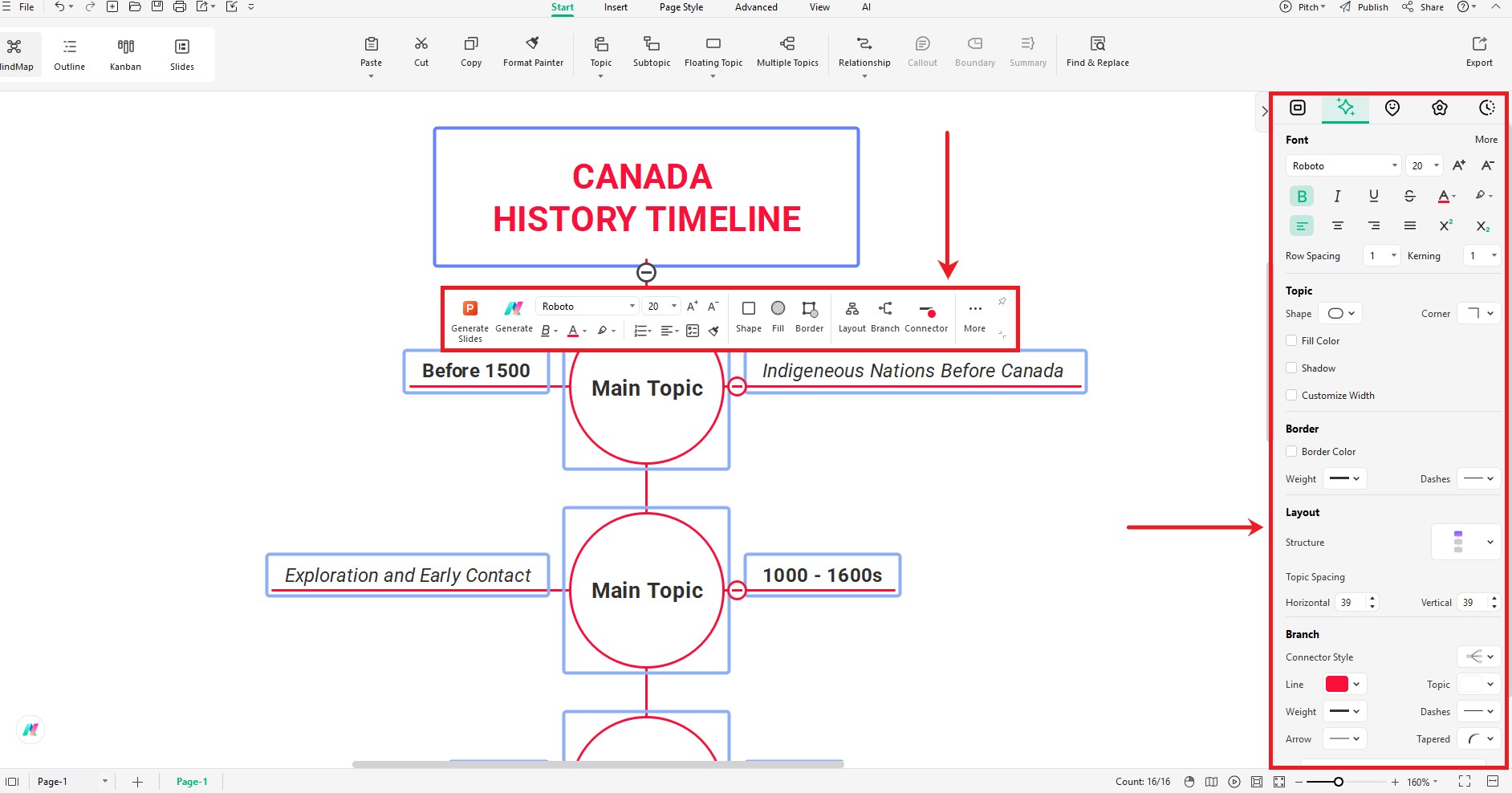
Step 5: Insert Images
- Let's add images to make our timeline more engaging. Download or copy any picture and paste it into the EdrawMind workspace.
- Change the image settings from the floating menu and the right toolbar. Drag the picture into a topic to insert it.
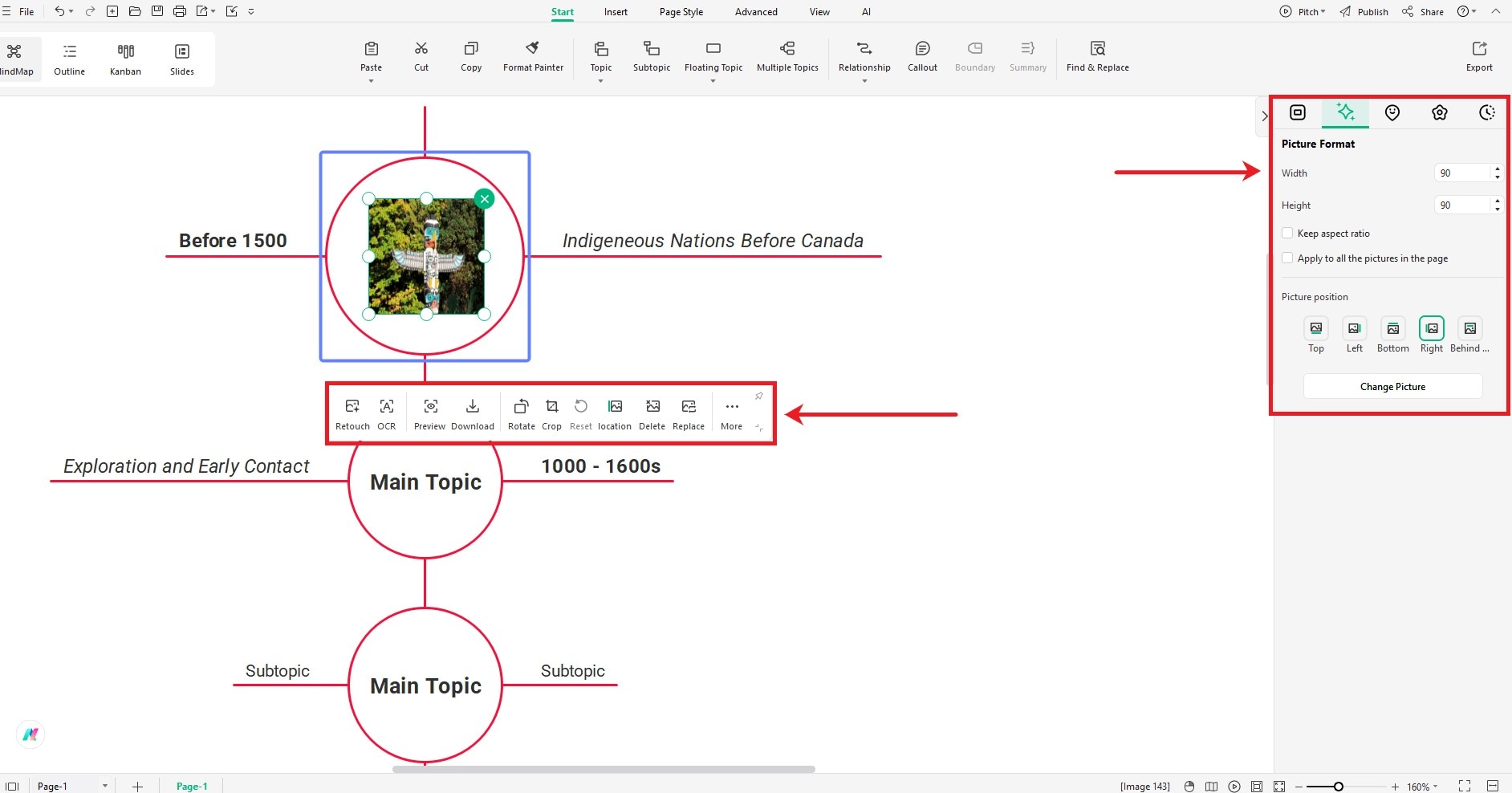
Step 6: Save or Share
- After finalizing everything, click the File button with the hamburger menu icon.
- Click Save to download the file or Share to send it via email or get a shareable link.
- Click Export to get more format options like JPG, PNG, PPT, PDF, and many more.
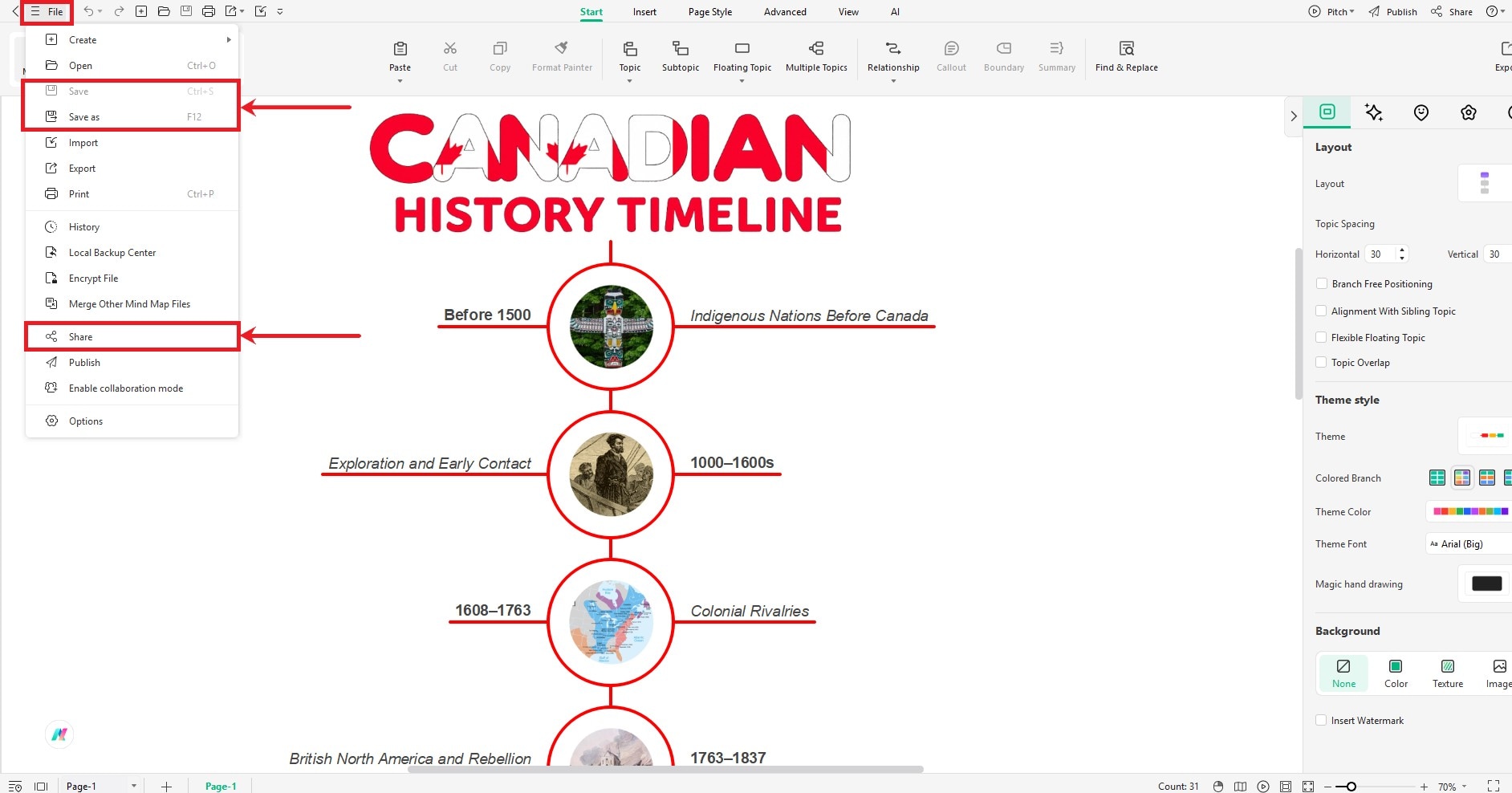
Closure
Canada's history isn't a straight line. It's a mix of bold steps forward and difficult reckonings with the past. It began with Indigenous nations, grew through colonial struggle, and keeps evolving today.
The journey hasn't been easy. But it's been rich, deep, and full of lessons. Reconciliation, environmental action, and national unity are still goals, not guarantees. But the country's diversity, resilience, and spirit remain b.
If you've ever wished you could organize history visually, EdrawMind is your go-to tool. Whether you're building a class project or exploring out of curiosity, it helps you think clearly and creatively.



